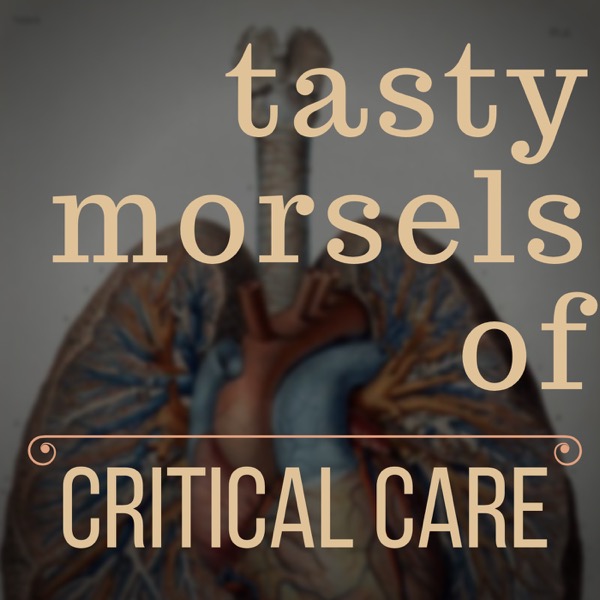Tasty Morsels of Critical Care 077 | Thyroid emergencies
Tasty Morsels of Critical Care - A podcast by Andy Neill - Mondays

Welcome back to the tasty morsels of critical care podcast. Today we’ll cover some key exam content, all be it not something you’re likely to run into in the ICU too often. The thyroid is a deceptive little organ, tucked in the neck, quietly secreting hormones and interfering in negative feedback loops. It usually restricts its mischief to outpatient clinics by running hot or cold on a chronic basis, occasionally hypertrophying and interfering with its more important neighbour the airway. But every now and then in a pique it decides it’s fed up of this low level mischief and uses its deeply embedded relationship with the rest of the body to wreak havoc. We’ll split this into 2 parts, one when the thyroid goes on strike and is under active and the other when it goes bananas and secretes far too much hormone Some basic physiology. Thyroid hormones are essential for all organ systems. The active forms are T3 and T4. T3 is generally the more active one. They are synthesised by incorporating iodine into tyrosine residues in thyroglobulin in the thyroid gland. Hence how iodine deficiency can cause a deficit in thyroid hromone. Their release into the circulation is stimulated by TSH. TSH causes endocytosis of this thyroglobulin into the follicular cells where they undergo hydrolysis into T3 and T4 which is released into the circulation. Both are highly protein bound to thyroid binding globulin. Our first relevant condition is the wonderfully named thyroid storm. Most commonly you might see this as part of untreated Grave’s disease. It can be precipitated by the usual physiological stressors such as surgery or sepsis etc… Expect to see (at least in an exam scenario) * fever * tachycardia or fast AF * jaundice * delirium * heart failure * eye signs or a goitre consistent with thyroid disease For awareness there is a clinical prediction tool that rejoices in the name Burch-Wartofsky Point Scale. This includes most of the features listed above. It’s clear that the features listed above are fairly non specific and like always it’s likely just sepsis. But if something in the spidey sense tingles then finding undetectable TSH and high T3 or T4 should really get you going. In reality this is an incredibly rare diagnosis, one which in its fulminant form i have yet to see. Or perhaps more accurately one that i have failed to diagnose as yet. This is of course hardly surprising as it is hopefully clear by now on this podcast that I am not especially good at what i do and continue to put my appointment to my current job down as some kind of administrative error that is yet to be detected. Once you’ve decided you’ve made the diagnosis then you’ll need a few basic principles of treatment. Firstly do a bit of resuscitation. There may well be some co existing sepsis so give some antibiotics. If they’re hypoxic give some oxygen. They may need some fluid or indeed they may be in congestive heart failure. The key is to do an assessment, this likely includes having a sneaky peak at the heart and the lungs with ultrasound. A commonly recommended treatment is propanolol to help with the tachycardia. Many patients will be hyperdynamic and tachycardic and giving a beta blocker may well be a good idea but giving a negative inotrope to someone who’s heart is a bit clapped out is generally considered bad form. The key message is to assess comprehensively and then decide. For specific therapies, your list should include some steroids, this reduces the release of thyroid hormone from the gland. There is occasionally some coexisting adrenal insufficiency so you’ll treat that as well.
